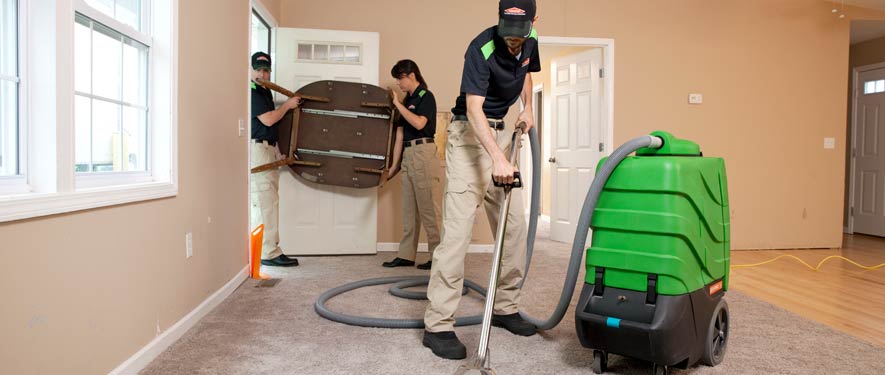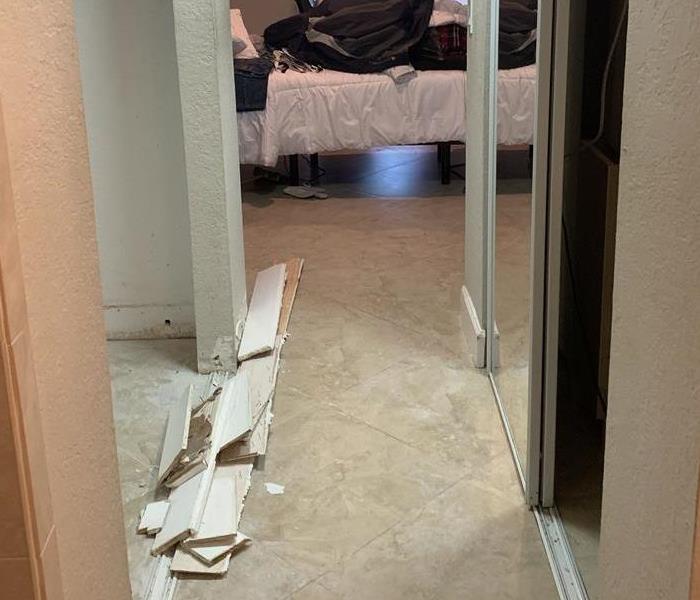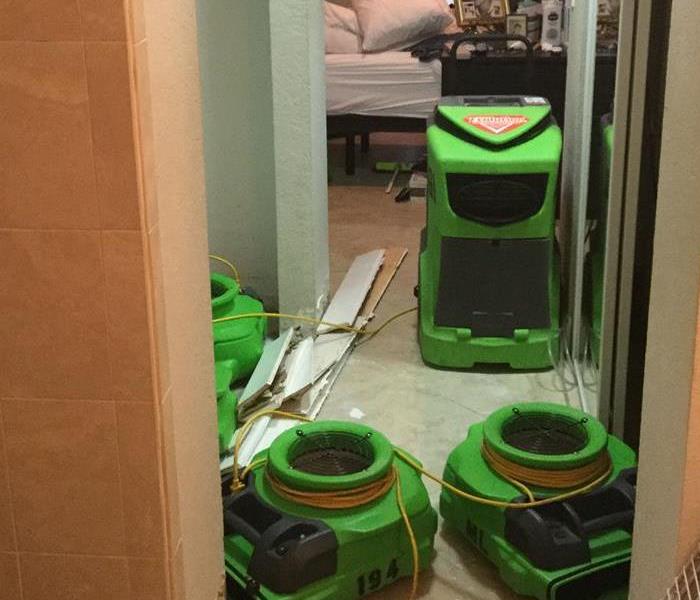
Step 3: Water Removal / Water Extraction
After a property is inspected and the damage assessed, it's time for the water removal process.
During water removal the first step is to remove and process furniture and possessions. Once the space is cleared we then move in powerful pumps and truck-mounted vacuum units to remove "standing water." Our commercial grade vacuum units are able to quickly remove thousands of gallons of water from your property, allowing our teams to make substantial progress.
Removing the water is important because water left to stand and further soak into the deep recesses of the property will only result in greater damage. Beyond that, mold infiltrates and odor from rotting material become equally oppressing.
See below for more info on water removal as well as the equipment we use.
Move-Out / Pack-Out
If your home requires extensive restoration or cleaning, SERVPRO of Doral can conduct an organized, efficient move-out to protect your belongings from further damage.
- Move-Out Service
Emergency Water Removal
Our highly trained technicians will begin the water removal process almost immediately. Depending on the amount of water, we may use powerful submersible pumps in addition to industrial strength, wet/dry vacuums. Removing most of the water helps reduce drying time and helps prevent secondary water damage and mold and bacterial growth.
- Remove Excess Water
- Use Submersible Pumps and Industrial Wet/Dry Vacuums
Inspect the Carpet Pad and Carpet
We inspect the carpet and pad and determine if they should be removed to protect the subfloor.
- Inspect Carpet Pad and Remove If Needed
- Inspect Carpet and Remove If Needed
Water Removal Equipment
- Moisture detectors, hygrometers, and other meters measure the extent of moisture saturation.
- Infrared cameras may be used to find “hidden” water behind walls and ceilings.
- Submersible and gas-powered pumps are used for continuous pumping of high-level water.
- Truck-mounted and portable extraction units perform efficient water removal.





 24/7 Emergency Service
24/7 Emergency Service




